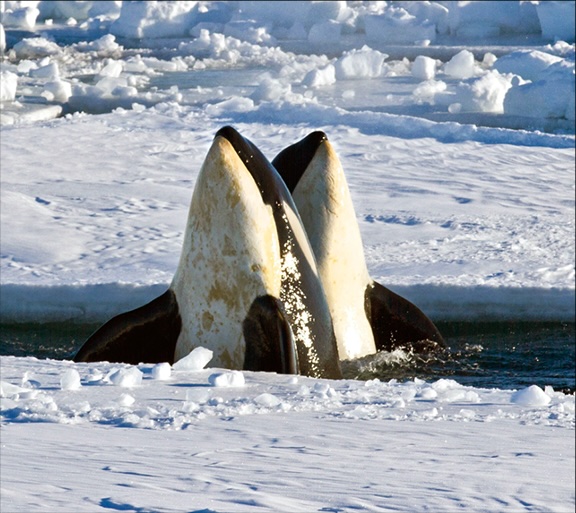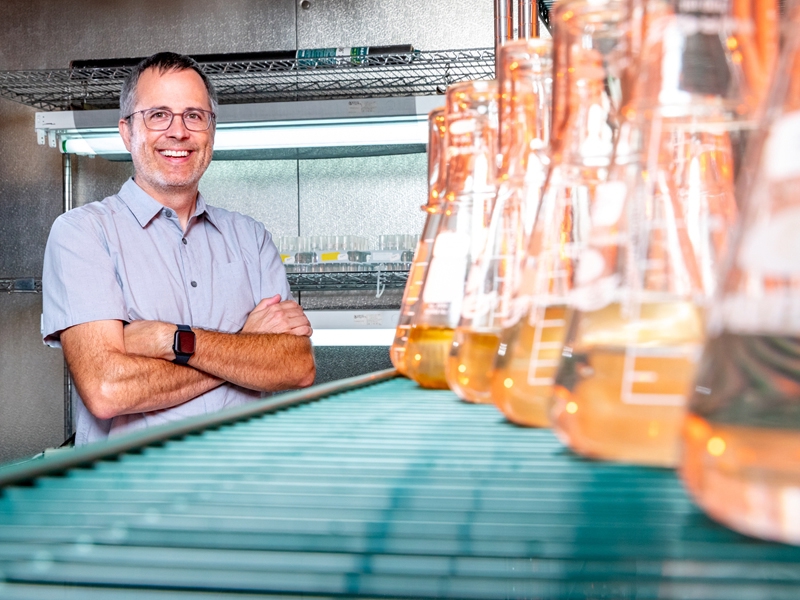NSF Awards $1.47 Million to Study Skin Microbiomes of Marine Animals
The National Science Foundation awarded a team of researchers $1.47 million to study the skin microbiomes of marine animals such as sea turtles, manatees, dolphins and whales.
As part of the collaborative proposal, the award is a combination of two separate ones. Principal investigator Andrew Alverson, a professor of biological sciences at the U of A, will receive $918,053 for his portion. Shady Amin, an associate professor of biology at New York University Abu Dhabi, will serve as principal investigator on the second $552,466 award.
Like humans, marine animals are covered in trillions of microbes. These microbial communities, which include bacteria and diatoms, are essential to protecting these animals from infections and disease. Though microbes represent most of Earth’s biodiversity, most of these species are yet to be discovered. The goal of this project is to document the diatom and bacterial species living on marine megafauna (or large animals). The researchers anticipate describing and naming many new diatom species for the first time.
 |
| Killer whales with golden brown diatom biofilm (Credit: Andrew Wright) |
Genome sequencing and characterization of the chemical environments will show how the diatoms are related to one another, how they move between host animals and how they interact with bacteria to use the unique resources offered by their hosts. Since many of these diatoms reside only on threatened or endangered animal species, like manatees, the fates of these microbial communities are closely connected to their hosts.
The team hopes discoveries made through this project will help them grow these diatoms in the lab, creating a permanent living record should their hosts suffer extinction. The team will enlist partners in Texas, Florida and Washington to collect more than 100 samples from more than a dozen different host species. All findings will be made public through scholarly articles, online databases and a monograph on these poorly known species.
“It’s really exciting to have a discovery-based project like this one,” Alverson said. “The diatoms on these animals are so highly adapted to their hosts that they cannot survive off of them. Figuring out how these relationships work, and what resources the diatoms derive from their host animals, is going to show us how quickly these kinds of associations can evolve.”
.jpg) |
| Manatees (Credit: Gregory Courtney) |
 |
| Loggerhead turtle (Credit: Tom Frankovich) |
An unusual component of the award is that the work will be accompanied by a three-part documentary created by Alexis Gambis, which will be featured at the Imagine Science Film Festival.
The three-part documentary will be titled Searching for Diatoms and will draw from scientific footage, fieldwork and interviews to tell the story of the evolving diatom. As stated in the award proposal, the filmmakers hope to create “a sense of wonder and empathy with these invisible microbiomes that are critical to Earth’s ecosystems.”
The project is being co-led by Alverson and Amin. Co-principal investigators include Matthew Ashworth, a researcher at the University of Texas, Austin, working at the Culture Collection of Algae, and Thomas Frankovich, a research assistant professor at Florida International University’s Southeast Environmental Research Center.
The three-year award is part of the NSF’s Poorly Sampled and Unknown Taxa program. This program seeks “to fill significant gaps in biodiversity knowledge and integrate taxon information within an evolutionary or taxonomic framework in poorly known, or dark areas, of the tree of life.”
About the University of Arkansas: As Arkansas' flagship institution, the U of A provides an internationally competitive education in more than 200 academic programs. Founded in 1871, the U of A contributes more than $2.2 billion to Arkansas’ economy through the teaching of new knowledge and skills, entrepreneurship and job development, discovery through research and creative activity while also providing training for professional disciplines. The Carnegie Foundation classifies the U of A among the few U.S. colleges and universities with the highest level of research activity. U.S. News & World Report ranks the U of A among the top public universities in the nation. See how the U of A works to build a better world at Arkansas Research and Economic Development News.
Contacts
Andrew Alverson, professor of biological sciences
Fulbright College of Arts and Sciences
479-575-7975, aja@uark.edu
Hardin Young, assistant director of research communications
University Relations
479-575-6850,
hyoung@uark.edu
